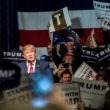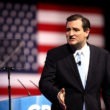Last month, as more voting machine glitches turned up in a special election in Florida, and earlier mistakes that were discovered elsewhere last year remained uninvestigated, former Democratic President Jimmy Carter and former Republican Secretary of State James Baker announced the formation of a bipartisan, non-governmental commission to scan the whole federal election system. They will hold public hearings on the electoral debacles we have gone through and will report to Congress by September. It’s about time.
Joining them will be the former Senate minority leader Tom Daschle, Democrat of South Dakota, and two former members of the House, Democrat Lee Hamilton of Indiana and Republican Susan Molinari of New York.
After the discovery of problems in six elections, the latest Florida fiasco, last month, brought the resignation of the Miami-Dade election supervisor, hired from Chicago after 28,000 ballots, mostly punch cards, went uncounted in the 2000 election. This time, in an election to okay slot machines, there was a high number of ballots with no recorded votes, known as “undervotes.”
Two years ago, Congress belatedly passed the so called Help America Vote Act. The abbreviated title of that ineffective bill—HAVA—quickly gave it the sneering name “the Half A Vote Act.”
It remains such an unrepaired mess, not sufficiently documented in the print or broadcast media, that we asked our scholarly contributor Margie Burns, an ardent Internet researcher, to share her discoveries. When she isn’t probing the web for little-disclosed atrocities, voting or other, she is a professor at the University of Maryland in Baltimore.
As The Washington Spectator discussed at length [January 15], big problems affect our electoral college. But more immediate problems impair our essential processes of collecting and counting individual votes.
The release of the exit polls conducted on Election Day this past November in all states showed a pattern that cannot be explained away. These were the original exit polls, taken before the outcome of the election was known. They were not the exit polls that were altered after the election, making them conform retroactively to published vote tallies.
The original exit-poll results are in clear and striking contrast to the final vote tallies given the public. Key discrepancies include the following:
1. Contrary to results in every national election for the past 20 years, the difference between the exit polls and the published vote tally was more than two percentage points—in other words, a swing of between 3 and 5 percent or more to President Bush in 33 out of 51 jurisdictions in a number of states. Regardless of which candidate won in those states, the variance went in the same direction—toward Bush.
2. Even in nine states showing less difference between the exit polls and the official vote tallies, there was still a smaller swing toward the president in the published vote tally, including in heavily Democratic Washington, D.C., and Maryland.
3. This crucial swing toward Bush occurred in every one of the close states. Colorado, Florida, Minnesota, New Hampshire, New Mexico, Ohio, Pennsylvania, Wisconsin and Iowa all allegedly had the same “red state” (Republican) shift. Most allegedly shifted more than two percentage points. In other words, there was a swing of 3 to 5 percent regardless of the size or the region of the state, or whether it went for Bush or for Kerry.
To sum up, a four-out-of-five-state Election Day swing to Bush was alleged even though new voters, independent voters, and younger voters were trending toward Kerry. It was an election where there was increased voter turnout, and this usually favors the challenger.
The statistical problem here is obvious: if the exit polls were simply wrong, then they should have erred randomly at various locations and in favor of different candidates.
FINALLY, SOME EXPERTISE—A paper titled “The Unexplained Exit Poll Discrepancy” has been published by Dr. Steven F. Freeman, whose Ph.D. in organizational studies came from the Massachusetts Institute of Technology and who holds professorships at the University of Pennsylvania; he runs an international business administration program created at Harvard.
According to Professor Freeman, the discrepancies between the exit polls and the vote tally are an anomaly even if you examine just the key battleground states of Pennsylvania, Ohio and Florida. The likelihood that in Ohio Kerry’s early exit polls would differ from the final vote tallies was less than one in 100; in Pennsylvania, it was slightly more than one in 100; and in Florida, less than two in 100.
According to Dr. Freeman, the odds against any two of these three combinations of votes occurring together are over 5,000 to one, and the odds against all three occurring together are 662,000 to one.
He concludes that “as much as we can say in social science that something is impossible, it is impossible that the discrepancies between predicted and actual vote counts in the three critical battleground states of the 2004 election could have been due to chance or random error.”
Exit polls are not just opinion polls. They are polls of people who actually showed up to vote, taken just after the voting, and weighted to take into account any preponderance of one group.
Professor Freeman’s paper points out that exit polls are used to check and verify the validity of elections in several countries, including Germany and Mexico. When exit polls contradicted the claim that Edward Shevardnadze had won election in the former Soviet state of Georgia, he was forced to resign under pressure from the U.S. Recently in Ukraine, widespread allegations of vote rigging were supported by discrepant exit polls, partly funded by the U.S. government, and a newly “elected” government was toppled.
Freeman’s initial report was reinforced by the release on March 31, 2005, of a more detailed study of the exit polls by the group US Count Votes.
The authors who provided the research and other evidence for this report included faculty experts in statistics and mathematics from a number of universities.
In their 27-page report, the professors noted numerous problems with the 2004 national election: “Voting machine shortages; ballots counted and recounted in secret; lost, discarded, and improperly rejected registration forms and absentee ballots; touch-screen machines that registered Bush when voters pressed Kerry; precincts in which there were more votes recorded than registered voters; precincts in which the reported participation rate was less than 10 percent; high rates of “spoiled” ballots and undervotes, in which no choice for president was recorded; a sworn affidavit by a Florida computer programmer who claims he was “hired to develop a voting program with a ‘back door’ mechanism that would undetectably alter vote tallies.”
“Under such circumstances,” the authors pointed out, “we must rely on indirect evidence” such as exit polls, or analysis of election result data “as a check of the overall integrity of the official election results. Without auditability or transparency in our election systems, the role of exit polls as a trigger for further scrutiny is of paramount importance.” They also point out that the accuracy of the exit polls when predicting the outcome of Senate races was not questioned.
The US Count Votes report’s authors conclude that “if the discrepancies between exit polls and election results cannot be explained by random sampling error; the ‘Reluctant Bush Responder’ hypothesis is inconsistent with the data; and other exit polling errors are insufficient to explain the large exit polling discrepancies, then the only remaining explanation that ‘the official vote count was corrupted’ must be seriously considered.”
In this country, immediate investigation is most urgent in the four states where the swing from exit poll results to the published vote tally also swung from Kerry to Bush: in Ohio, Florida, New Mexico and Iowa. Precincts and counties in all four of those states reported problems with the voting process and with vote counting. These four states control 59 electoral votes, more than enough to change the election outcome.
OPTICAL SCAMMING—For Florida counties, the biggest difference in the 2004 election was not between “red” and “blue” jurisdictions but between touch-screen and optical scan voting machines. Fifteen Florida counties used touch-screen voting machines, produced by the company Electronic Systems and Software (ES&S) or by another company, Sequoia Voting Systems. The other 52 counties used paper ballots. But the paper ballots, traditionally the safest way to vote in a supervised setting, were not counted manually. Instead, the paper ballots were processed by optical scanning equipment manufactured by ES&S, Sequoia, or by a third company, Diebold, Inc.
Optical scanning in voting has been used for years, mostly without the careful checking that supermarket scanners occasionally get. Surveys indicate that supermarket optical scanners get the price wrong about 5 percent of the time.
Following the election, a mathematician and researcher named Kathy Dopp tabulated differences between touch-screen counties and op-scan counties. The differences reveal a simple and clear pattern. In touch-screen counties the county’s vote for president almost always went for the candidate of its majority party. In op-scan counties, the county’s vote for president mostly went against the candidate of its majority party.
Whatever problems the touch-screens had, 14 out of 15 counties using touch-screen equipment at least had an outcome in line with party registration. Counties with more Republicans went Republican; counties with more Democrats went Democratic.
But of the 52 counties using op-scan ballots, only 21 voted in the direction predicted by their voter registration—fewer than half. The other 31 counties went in opposition to their voter registration, and all but one went for Bush. The sole exception was Monroe County, with an exceptionally close outcome.
Even where the op-scan vote ran with party registration, the margin was different, suggesting again that Kerry, at the last minute, lost Democrats, independents, and unaffiliated voters in an election where independents and new voters were trending toward Kerry.
A manual recount of two op-scan counties and part of another by two Miami Herald reporters netted Kerry 11 additional votes in one small county, and 24 in another.
On another front, the biggest touch-screen counties in Florida all reported problems with long lines. The most startling and dramatic testimony on Florida’s election problems came from Clinton Curtis, formerly a software programmer at the Florida company Yang Enterprises, Inc (YEI). Curtis has brought his voting software experience to light in sworn testimony and in anaffidavit.
In the fall of 2000 Curtis witnessed Representative Tom Feeney (R-FL), at that time YEI’s company counsel and lobbyist, visit the company with an unusual request: “Mr. Feeney said that he wanted to know if YEI could develop a prototype of a voting program that could alter the vote tabulation in an election and be undetectable.”
In a conversation involving several company staffers at which Curtis was present, Feeney “was very specific in the design and specifications required for this program.” Curtis was directed to create the fraudulent voter-software prototype, and he did so.
Contacted repeatedly with questions, Feeney’s office has declined to comment on the Curtis affidavit.
The affidavit details a chilling sequence in which the project was developed, was handed to one of the company managers, and was then delivered elsewhere after an open statement that it was intended to control the vote in South Florida by manipulating margins and percentages in some precincts.
Curtis subsequently left YEI, which threw a farewell party for him. His farewell card is posted atwww.bradblog.com, a website that has done a magnificent job of bringing this story to light.
PROBLEMS ELSEWHERE—A Democratic website has posted disparities between the margin of votes received by Kerry in New Mexico, and by other Democratic candidates, for local positions, including judgeships. Apparently every Democrat running in a surprising number of counties outperformed the top of the ticket, although usually a presidential candidate gets more votes than those in lesser races.
Ohio presented the appearance of massive voter suppression and vote fraud. Along with widely reported irregularities, including excessively long lines at, and confusion about, the location of voting places, an article by Dr. Richard Hayes Phillips, “Stealing Votes in Columbus,” documents how voting machines were taken away from high-population precincts, which were likely to go for Kerry, and sent to more affluent suburbs with their smaller populations, instead. Dr. Phillips has tabulated the difference voting machines made in the voting.
The precincts with the longest lines, of course, turned away more voters. Phillips reports that the voting machines were disbursed by a former executive director of the Franklin County Republican Party, Matt Damschroder, who met with George W. Bush and with Ohio’s Republican Secretary of State, Kenneth Blackwell, on Election Day.
Phillips concludes that “Damschroder did not act alone” in Ohio. With 74 wards and 472 precincts in Columbus, one person could not have delivered all the voting machines, and probably could not have planned all the deliveries. “Anyone who associated with Mr. Damschroder on or shortly before Election Day should be investigated for possible complicity.”
Interestingly, the former president of the voting-machine company Diebold and the vice-president of ES&S, two of the largest companies in the field, who are brothers, are also major Republican donors and supporters. Together, Diebold and ES&S count 80 percent of all votes in the U.S.
There is hope for concerned citizens, however. Along with investigations into the election by the F.B.I., the Department of Justice and Congress, citizen movements to restore the integrity of the voting process are springing up around the country. One of the strongest, called US Count Votes, is forming “a database containing precinct-level election results for the entire United States,” according to its founders. You can go to www.electionarchive.org for more information.






0 Comments